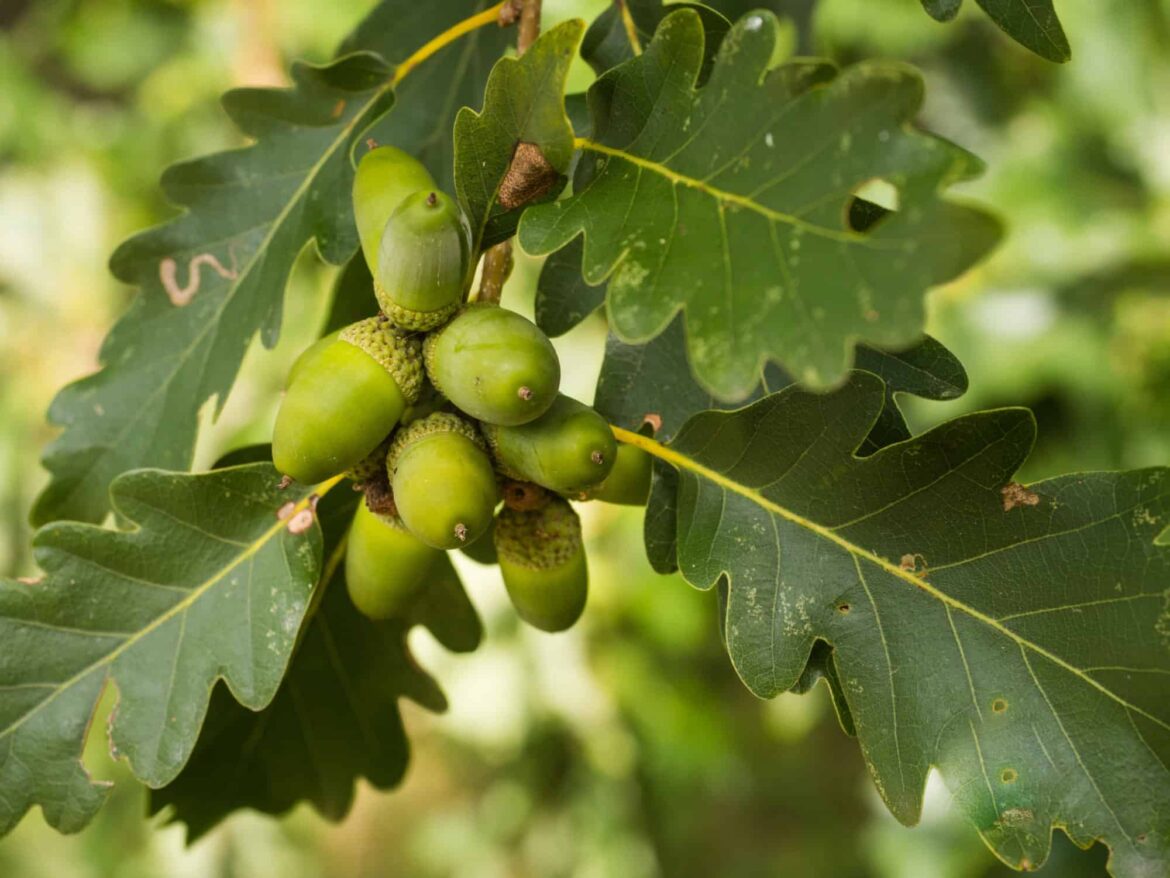There are an estimated 600 species of oak. They are among the oldest deciduous trees in the world.
Important information about oak species:
Many species of oak can be found in the northern hemisphere. They are found, for example, in North America, Europe, Eurasia and North Africa. The history of the oak goes back 12 million years. The trees can live up to 1,000 years. It is only possible to estimate how many species of oak there are: it is thought to be around 600. The common oak, which is also known as the German oak, is widespread in Germany and in large parts of Europe. In addition, there are other well-known types of oak.
- Common Oak: The common oak (Quercus robur), which is widespread in Europe, is found mainly in mixed forests and riparian forests. When fully grown, it can reach a height of 40 m. The robust tree is recognizable by its broad crown and deeply grooved bark. The wood is water-resistant and therefore well suited for the construction of ships or bridges.
- Sessile oak: The sessile oak (Quercus petraea), which is also widespread in Europe, can be found in lowlands and low mountain ranges. It prefers mild climatic conditions, which is why it is not found on the North Sea coast, for example. The conical crown is highly domed, with the trunk continuing up to the treetop. Its trunk diameter can be 2 m.
- Holm oak: The holm oak (Quercus ilex) grows in the Mediterranean region, e.g. in Portugal, Turkey and Tunisia. The evergreen tree has leathery, dark green leaves and an asymmetrical crown. The acorns are eaten by the Iberian pigs that are famous for their Iberico ham. The slow-growing tree reaches a height of 25-30 m.
- White oak: The North American white oak (Quercus alba) is the state tree of several US states, such as Connecticut and Maryland. It grows almost everywhere in the eastern United States. Its striking features are its spreading crown and light gray bark. Its wood is very durable and is used for furniture such as cabinets in a country house style or for wooden floors.
- downy oak: The downy oak (Quercus pubescens) is native to many parts of Europe, Asia Minor and the Caucasus. These relatively small, gnarled-looking trees grow in extreme conditions, such as on slopes or in dry areas. From an ecological point of view, they are therefore of particular importance in the context of climate change.
Future: The dying of the oaks in Germany
The typical oaks in Germany, such as the German oak, are suffering from the increasing drought and heat due to climate change. Some people take the forest for granted, which is also evident from the littering of the forests. However, if the forests are minimized, it will have a significant impact on nature, humans and animals.
- Due to the lack of water, the trees are more susceptible to pests. These drill into the bark and eat away the leaves. The trees can defend themselves less against it.
- Only 19 percent of the oaks in Germany are said to still be there. According to the, of the most common tree species in Germany, such as oak, beech, spruce and pine, 4 out of 5 trees are diseased. healthy Forest Condition Survey by the Federal Ministry of Food and Agriculture from 2023
- The oak provides a habitat for numerous animals. Birds find shelter in the tree cavities. The oak serves as a food source and shelter for many insects. Jays and squirrels feed on the fruits. When the oaks die, it has a direct impact on the animal world.
- It is important to see the forest through different eyes in the future. So far, the wood of the trees has been seen mainly as a raw material. The important function of forests as part of the ecosystem must be given more emphasis. Books about the forests educate on this.

